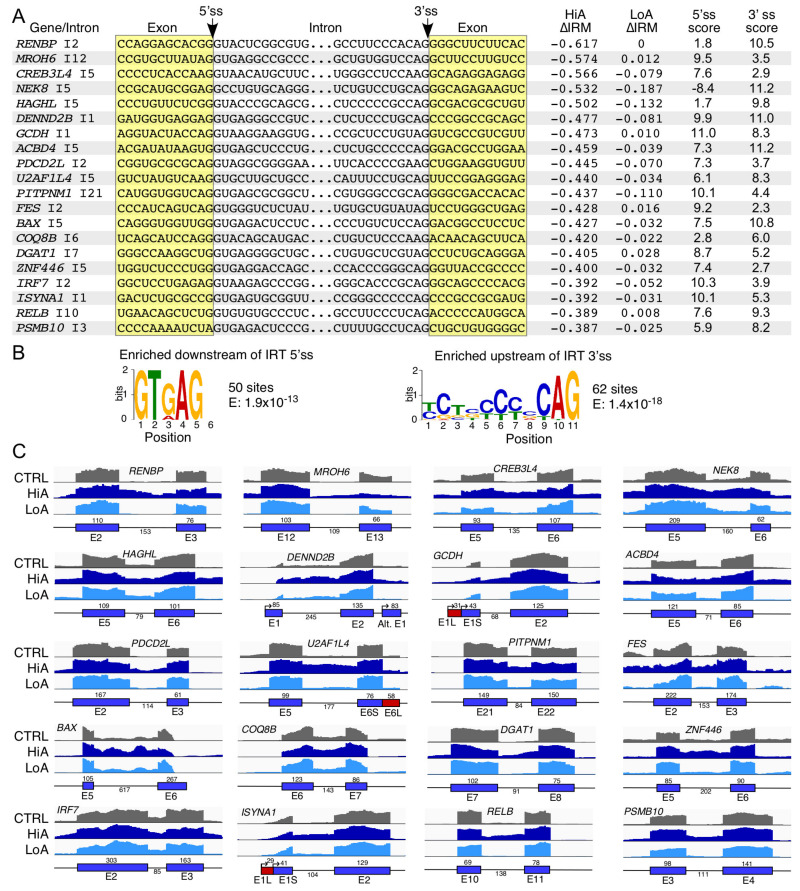Figure 5.
Increased intron retention caused by Anti-N1 treatment. (A). The sequence context of 20 candidate introns exhibiting greatly increased retention upon Anti-N1 treatment; 12 nt-long sequences that surround each indicated splice site are shown. ∆IRM indicates the change in proportional intron removal vs. intron retention. Other table contents and annotation are the same as in Figure 3A. (B). Enriched sequence motifs identified by MEME. Left panel: the most enriched motif within 50 nucleotides downstream of the 5′ss of retained introns, which matches the first 5 nucleotides of the consensus 5′ss motif. Right panel: the most enriched motif upstream of the 3′ss of retained introns, which closely resembles the polypyrimidine tract and the 3′ss AG dinucleotide. n = 100 sequences. (C). Genomic views of several candidate introns whose retention is increased upon Anti-N1 treatment. Labeling and coloring are the same as in Figure 3C.

